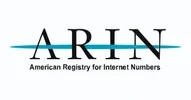IPv4 Blacklist Checker
Our tool checks over 85 RBLs to see if your IP Address or Domain is listed
You’ll also be provided with delisting links for all of the blacklists where your IP or domain is blacklisted on. Following these links will take you exactly where you need to go on the blacklist’s website to follow their delisting procedures.
Blacklist Checker — Ensure Your IP Blocks Are Clean & Ready for Use
In today’s network environment, having an IP address or block listed on a blacklist can dramatically impact your operations — from email deliverability and reputation to service launches and marketing campaigns. At IPv4 Hub, our Blacklist Checker is your first line of defence: a quick, accurate check to make sure your IPv4 blocks are clean, market-ready, and risk‑free.
Why a Blacklist Check Matters
-
Being listed on a known blacklist means your communications can be blocked, filtered into spam, or your network may face increased scrutiny from ISPs and service providers.
-
Many of the tools used by companies and hosting providers scan across dozens of DNS‑Based Blackhole Lists (DNSBLs) and reputation databases to see if your IPs have been flagged.
-
Even if your block has never been used for spam, acquiring or deploying addresses without checking may expose you to inherited reputational damage from prior use — making verification essential.
-
By using our Blacklist Checker, you gain transparency and control: you can verify status, plan mitigation if needed, and confidently deploy IPs for your own use or resale/leasing without hidden risks.
What Our Checker Gives You
-
Comprehensive scan across major blacklist and reputation databases, so you can see if an IPv4 address or block is listed and why.
-
Detailed insights showing which lists flagged your IP, how long it’s been listed, and what the probable reasons are — giving you actionable intelligence.
-
Early‑warning benefits — by catching issues before deployment you avoid project delays, delivery failures, or costly remediation down the line.
-
Market readiness assurance — especially relevant if you’re leasing or selling IPv4 blocks: clean status = higher value and smoother transaction.
-
Ongoing peace of mind — many organisations adopt periodic blacklist monitoring rather than a one‑off check to maintain a healthy IP reputation over time.
How It Works (Simple, Transparent)
-
Enter your IP or block — you provide the IPv4 address or range you want checked.
-
We scan against multiple sources — our system queries major DNSBLs, reputation services and threat databases.
-
Receive a clear report — we present whether the IP is clean or listed, what the listing means, and next steps to remediate if necessary.
-
Deploy, lease or sell confidently — once cleared, you have the documented status to move forward with your operations, marketing, or transaction.
Best Practices If You Find a Listing
-
Investigate the cause: it could stem from past spam activity, malware, open relays, or legacy usage.
-
Remediation is critical: fix any underlying issue (e.g., vulnerable server, bulk mail practice, compromised host) before requesting delisting.
-
Make cleaning and monitoring part of your routine: regular checks prevent surprise listings and help protect your network reputation.
-
For leased or sold blocks: transparency about previous history and status builds trust with buyers/lessees.
Who Should Use the Blacklist Checker?
-
Organisations acquiring new IPv4 blocks and want assurance they’re clean before deployment.
-
Hosting & cloud providers preparing large‑scale launch or expansion, where reputation matters.
-
Businesses leasing IPs or offering IP services, to validate inventory and maintain trust.
-
Anyone managing email servers, bulk sending infrastructure or web services where deliverability and reputation are vital.
Why Choose IPv4 Hub’s Checker?
-
We combine IP leasing, sales, and inventory services — our Blacklist Checker is built into a broader IP ecosystem that understands clean addressing, transfer documentation and compliance.
-
We provide clear guidance and action‑based insights, not just “listed/not listed”.
-
Our support team can assist you in interpreting results, planning mitigation, and preparing for deployment or transaction.
Ready to Verify Your IPs?
Start now by entering your IPv4 address or range. Get your report and move forward with the confidence that your IP infrastructure is clean, compliant and market‑ready.
Frequently Asked Questions (FAQs)
What is a RBL?
A Real-Time Blackhole List (RBL), also known as a blocklist or Domain Name System-based Blacklist (DNSBL), is a list of IP addresses, domain names, or Universal Resource Locators (URLs) that are known to be sources of spam or security threats. RBLs are used by internet mail servers to check the origin of incoming emails in real-time and determine if they are legitimate. This can help to reduce the load on a mailbox’s spam filters.
How can I get my IP off an RBL list?
Each RBL website will have instructions on how to request delisting. It’s important to solve the underlying email problem before you request your IP be unblocked. This can involve changing passwords, Adding a Sender Policy Framework (SPF) Record and Enabling DomainKeys Identified Mail (DKIM), reconfiguring your email forwarding, or speaking to email users on your server. If you request delisting but your server still appears to be sending spam, your IP will be relisted and it will be more difficult to delist a second time.
What problems will blacklisted IPs cause?
If your IP address is listed on an RBL, you might have trouble sending legitimate email and will get error messages. If you see that your email is being rejected, it’s easy to check if your server’s IP is listed on any RBLs by using an online RBL checker. Remember that RBL usage is set by the receiver, not the email sender. This means you don’t have control over the RBLs your email recipients are using to filter their email. People can usually request to have their IPs delisted from RBLs, and some lists delist IPs automatically after a period of time.
What should I do if my IP/domain is blacklisted?
Firstly, don’t panic. Each RBL website will have instructions on how to request delisting. It’s important to solve the underlying email problem before you request your IP be unblocked. This can involve changing passwords, Adding a Sender Policy Framework (SPF) Record and Enabling DomainKeys Identified Mail (DKIM), reconfiguring your email forwarding, or speaking to email users on your server. If you request delisting but your server still appears to be sending spam, your IP will be relisted and it will be more difficult to delist a second time.
How can I prevent my IP/domain from being blacklisted?
Ensure your email marketing practices comply with anti-spam laws, keep your mailing lists clean and up-to-date, secure your mail servers against unauthorized use, and regularly monitor for any unusual activity. Our service also offers advice and best practices to help keep you off blacklists.




